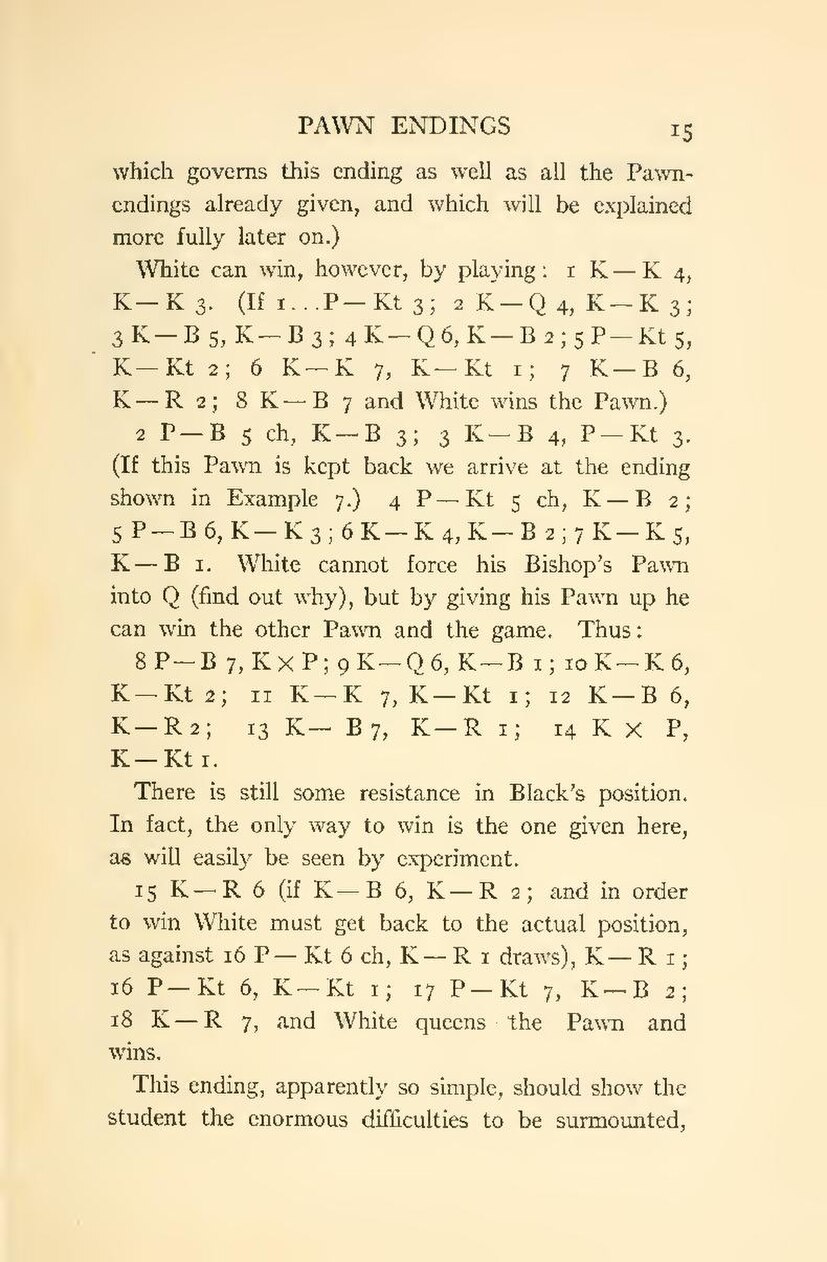which governs this ending as well as all the Pawn-endings already given, and which will be explained more fully later on.)
White can win, however, by playing: 1 K - K 4, K - K 3. (If 1...P - Kt 3; 2 K - Q 4, K - K 3; 3 K - B 5, K - B 3; 4 K - Q 6, K - B 2; 5 P - Kt 5, K - Kt 2; 6 K - K 7, K - Kt 1; 7 K - B 6, K - R 2; 8 K - B 7 and White wins the Pawn.)
2 P - B 5 ch, K - B 3; 3 K - B 4, P - Kt 3. (If this Pawn is kept back we arrive at the ending shown in Example 7.) 4 P - Kt 5 ch, K - B 2; 5 P - B 6, K - K 3; 6 K - K 4, K - B 2; 7 K - K 5, K - B 1. White cannot force his Bishop's Pawn into Q (find out why), but by giving his Pawn up he can win the other Pawn and the game. Thus:
8 P - B 7, K × P; 9 K - Q 6, K - B 1; 10 K - K 6, K - Kt 2; 11 K - K 7, K - Kt 1; 12 K - B 6, K - R 2; 13 K - B 7, K - R 1; 14 K × P , K - Kt 1.
There is still some resistance in Black's position. In fact, the only way to win is the one given here, as will easily be seen by experiment.
15 K - R 6 (if K - B 6, K - R 2; and in order to win White must get back to the actual position, as against 16 P - Kt 6 ch, K - R 1 draws), K - R 1; 16 P - Kt 6, K - Kt 1; 17 P - Kt 7, K - B 2; 18 K - R 7, and White queens the Pawn and wins.
This ending, apparently so simple, should show the student the enormous difficulties to be surmounted,
